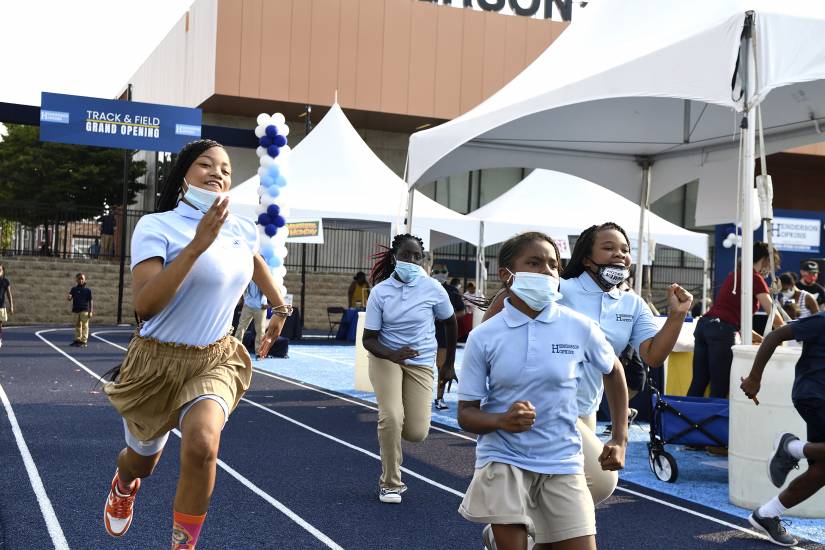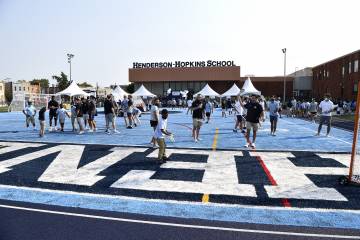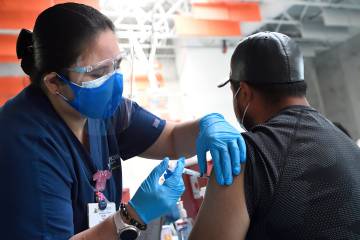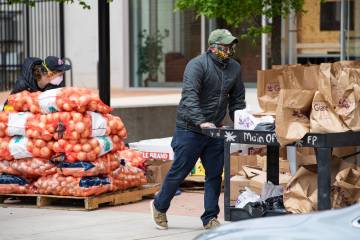In June 2021, Henderson-Hopkins principal Peter Kannam gathered his staff for an outdoors meeting to sign off on the most surreal and disorienting school year anybody had ever experienced. The K-8 school in Baltimore's Eager Park had just completed three months of a hybrid-learning model that left teachers fatigued, simultaneously juggling students online and in person.
With the pandemic seemingly receding, this felt like closure. "I thought everything was going back to normal. We'd hit the ground running in August and it would be normal school," says Kannam, who earned his master's degree in 1999 from the School of Education (then known as the School of Professional Studies in Business and Education). When the delta variant surged in late summer, the principal had to step back to recalibrate. "I had to adjust my mental frame to say, 'We're still in this. We've got to get through this.'"
As principal of Henderson-Hopkins since June 2018, Kannam has now spent more than half of his tenure steering the school community through a global pandemic. Improvisation and flexibility have defined his response: The school never fully shut its doors, but adapted to become a food distribution site, vaccination clinic, and haven for students who still needed supervision and meals.
On Aug. 30, Henderson-Hopkins, a contract school of Baltimore City Schools operated by Johns Hopkins and Morgan State universities, finally welcomed back a full student body to its hallways for the first time since COVID-19 hit. We checked in with Kannam a few weeks later to see how the school community is adjusting.
What's the mood like as you start the school year?
What I'd say is: The kids are all back. We are fully enrolled with about 600 students in person. There was hesitancy with the delta variant; questions whether students and their families would feel comfortable coming back. But this time I think there's confidence because we have experience bringing students back into the building in different ways over the past year, so we know how to keep safe and we're very serious with our procedures and our masking.
So this a huge victory, you know? The kids are excited, and it's been wonderful seeing them interact with each other. They're happy to meet new friends and see old friends they've missed. For some of them, it's been 18 months they haven't been back in a school building.
Before this fall, in what capacity has Henderson-Hopkins been open in person during COVID?
When the pandemic first hit, we became one of the first places in the city to offer a Safe Center for Online Learning, funded by a state grant. It was really helpful for kids whose parents had to go into work. Our teachers were still teaching remotely, but the center gave students internet access, adult supervision, and meals. Then in September 2020 we also partnered with Baltimore City Schools to create another online learning center, so we'd have about 100 kids total in the school building each day.
Also see
In March 2021, we reopened our school building and families had the choice of whether to go back in person. Henderson-Hopkins had one of the highest percentages in the city of students returning, about 40% of our families back in person, so about 250 students. It was a crazy time for teachers from March to June, simultaneously teaching kids in person and those at home online. That's tough! The feedback from teachers was, it's gotta be one or the other, because doing both is too difficult.
We're at a point where we're all beyond fatigued by the pandemic. How do you keep morale up at your school?
First of all, we have to continue to take COVID very seriously. Things like masks and lunch protocols, eating six feet apart. We need to have everyone's confidence that this is a safe environment.
Recently we've really been promoting health and wellness and exercise. That's been a central theme. We're gonna run around at recess, we're going to play afterschool sports. We're going to move. In our classrooms we've built in time for what we call social-emotional learning. Teachers are working to better connect with students and lift their moods. If you were to come to our school, you might hear music playing during traditional homeroom, for example. And we have a dean of student wellness and a full-time mental health specialist.
Then there's the little things that keep it fun, like dress-down days on Fridays and a whole gambit of activities.

Image caption: Students raced around the new track at Henderson-Hopkins during its grand-opening celebration in September.
Image credit: Will Kirk / Johns Hopkins University
What's been the high point of your pandemic experience as principal?
I can pick two. One was that first day of school, seeing everybody—through the masks—the joy on their faces, seeing that they'd been craving being back at work and back at school. That was a really, really happy day.
Then, our event opening our new track and field [on Sept. 14]. Everybody came out. I'm so very proud it. It was just a celebration. Families came, the Hopkins sport teams were working with the kids, a DJ was playing. Kids were being kids and being happy. I think the track symbolizes to me an investment in students, that we cherish them, and the kids feel that.
On the other end, what was your low point?
I think we're all dealing with the fact that we have to continually adapt to the pandemic. Starting summer, I wanted to believe this was all going away and we'd have a normal school year. I think my low point was realizing over the summer that the uncertainty would continue and we had to keep working through this.
It's well known that a lot of students have fallen behind academically during COVID. How is your school grappling with that?
The reality is the reality: Plenty more students are further behind, when I look at our data. Our focus is acceleration. The biggest danger is that everyone lowers down to where the students are right now and then they never catch up. So all of our professional development, all of our academic support, emphasizes teaching to grade-level standards.
There's time built into teacher's lessons, after they've taught the grade-level material, to place kids into smaller groups and meet them where they're at. You can just imagine if you're a fourth grader and you get taught a fourth grade lesson, but some of your skills are still second grade level. A teacher has to do both. You have to give them the fourth grade stuff, but you have to figure out how to spiral in skills they've lost.
We've expanded our blocks of math and reading so students are spending more time there. With reading, we've learned through research that kids need to understand the technical mechanics, like phonics, so we've built in a 45-to-60-minute block per day on that in grades K to 2. We also have a very aggressive tutoring program with a partner called The Literacy Lab, that pulls kids and works with them on basic reading skills.
And we're able to keep tabs on every student through portfolios, which capture where they are and where they need improvement, with teacher commentary. It gives us a benchmark and we continue to gather data points.

Image caption: Peter Kannam was among the volunteers at an April 2020 food drive at Henderson-Hopkins that distributed 7,000 pounds of groceries to the K-8 school's neighbors.
Image credit: Will Kirk / Johns Hopkins University
How are parents keeping in the loop?
One thing we've continued is hosting monthly virtual town halls, and I'll be honest, we've learned that virtual works better for a lot of people. If you're a parent, driving in from 5 to 6:30 p.m. for a meeting, versus listening from home while you're cooking dinner, the choice is easy. We've seen much better attendance, about 100 parents for every town hall, and we're going to keep it that way. It's more convenient and parents have gotten used to it.
What's the status now of your food distribution drive?
We've given out food to tens of thousands of families, about 10,000 pounds per week. We haven't missed one week since March 2020. The cool thing is we've become a real distribution hub for the community. Like a truck will come and pick up food boxes and we know they're going to a senior care center, or a local church. That's something I'm super proud of.
Posted in Voices+Opinion, Community
Tagged education, community, henderson-hopkins, covid-19, peter kannam











